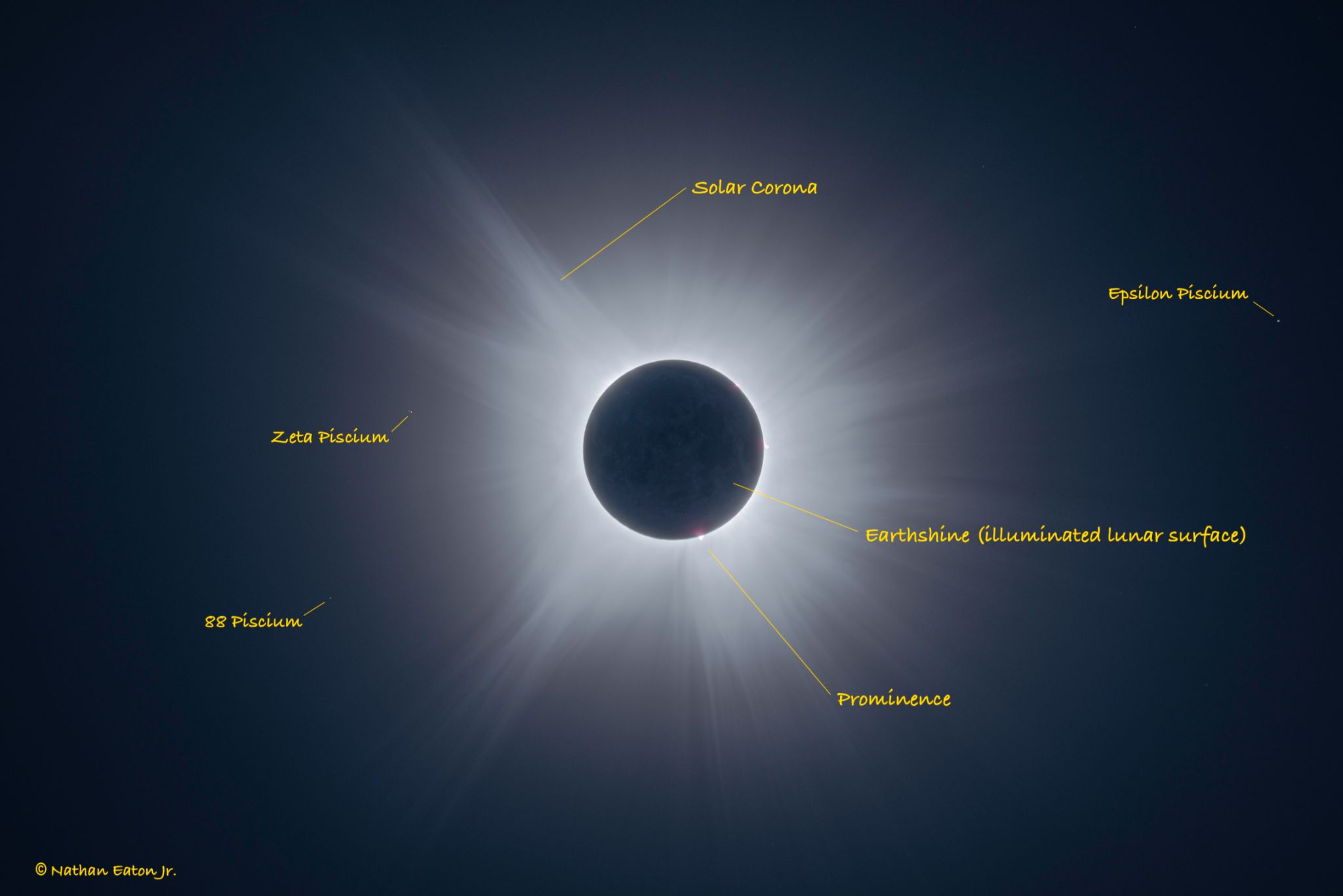By Zion Saal | 2024-04-08

On 04/08/2024 01:43 pm by Nathan Eaton Jr| Ellis County, Texas, USA
I went down a bit of a rabbit hole this week, assuming that to really get sharp detailed images of totality I needed to go through the rather involved process of using calibration frames to process all of the images I planned to stack before trying to stack, register and merge them. After spending a few evenings starting down that road, I took a break and in reviewing tutorials on processing solar eclipse images I ran across several that describe doing everything directly in Photoshop without the use of registration frames.
Following the process described in a Sky & Telescope article, I created the image above using a set of images shot at 2 stop intervals from 1/4000th of a second to 1 second, all shot at f/5 and ISO 100 with my Nikon D750 through our Sky Watcher Evostar 72ED telescope.
Although Venus and Jupiter were clearly visible in the sky, they were well outside the field of view of my telescope yet plenty of stars from the constellation Pisces do appear.
The original, unlabled image is available on my blog.
Sky Watcher Evostar 72ED with 0.85 Focal Reducer/Flattener
Deepsky Dad AF3 Autofocuser
Nikon D750
Sky Watcher Star Adventurer GTi
2012 15" MacBook Pro running Mojave and Solar Eclipse Maestro controlling imaging
Blend of 7 images from 1/4000 to 1" at 2 stop intervals, loaded as layers in Photoshop
Opacity of layers adjusted with longest exposure at 100%, fastest at 50% and decreasing opacity for each image faster than 1/4000
Additional adjustments to exposure, contrast, shadows, clarity and texture using Adobe Camera Raw filter
Labels added with Photoshop
Processing based on Sky & Telescope article March 15, 2020 by Sean Walker
